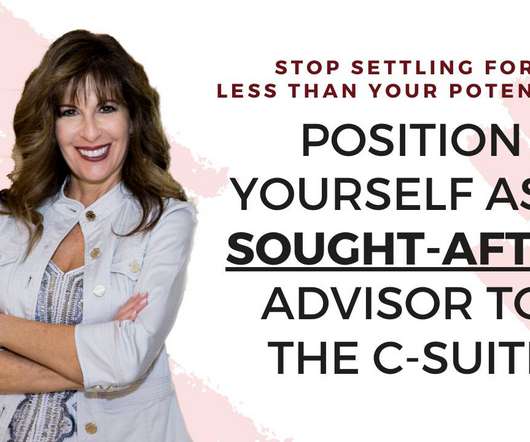5 Steps to Strategically Positioning Your Consulting
Consulting Matters
SEPTEMBER 16, 2020
And I had this team that I was leading around human resource development. We had career development, organizational development, training, and development. The purpose of this particular training is I want to expand your vision around your role. You may actually think you have a positioning problem.












Let's personalize your content